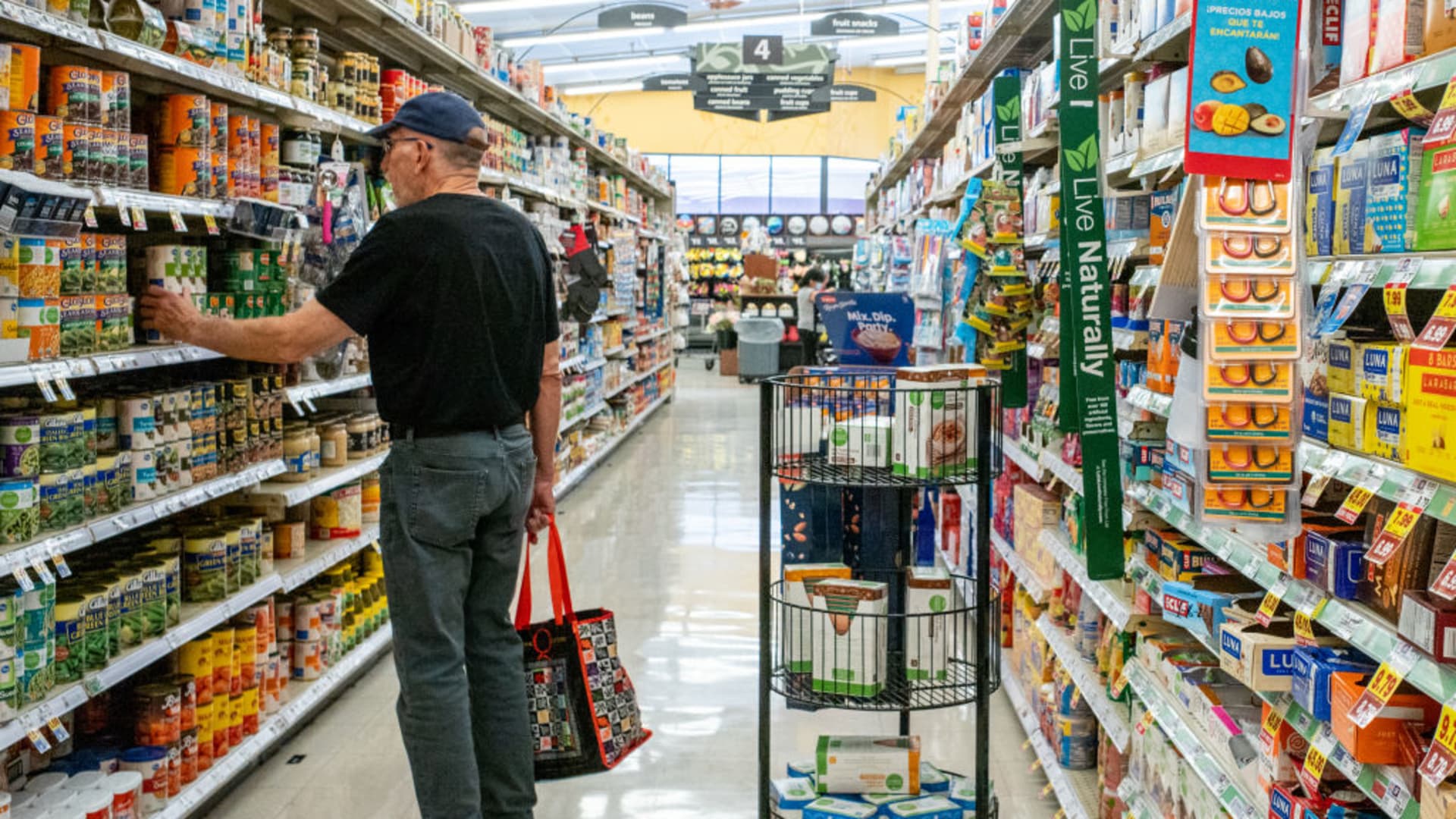
Many consumers have suffered sticker shock at the grocery store due to record high inflation.
But another surprise that’s grabbing consumers’ attention — and even trending on TikTok — is “shrinkflation.”
Almost two-thirds, 64%, of all adults are worried about shrinkflation, according to a new survey from Morning Consult, while 54% have seen, heard or read something about the phenomenon.
Shrinkflation is ‘getting less for the same price’
Shrinkflation happens when consumer products get smaller in weight, size or quantity while their prices stay the same or even increase.
Consumers have been pointing to examples of shrinkflation for months, amid record high inflation. The trend is taking hold now as companies face higher prices for gas and ingredients, as well as supply chain constraints, according to Emily Moquin, food and beverage analyst at Morning Consult.
Meanwhile, consumers are on high alert as prices have climbed higher, making them more sensitive to shrinkflation, according to Moquin.
“When you notice that the package is smaller or you’re getting less for the same price, it’s especially frustrating,” Moquin said.
While shrinkflation is getting a lot of attention now, it’s not new, as this kind of downsizing has been going on for decades, according to Edgar Dworsky, founder and editor of Consumer World.
“We’re in the middle of a tidal wave of inflation, unfortunately, and so we’re seeing more and more items that are shrinking,” Dworsky said.
How consumers are reacting to shrinkflation
The top categories where consumers are noticing shrinkflation include snacks, pantry items, frozen foods, meat, and bread and pastries, according to Morning Consult’s poll.
In response, 49% of consumers say they purchased a different brand, while 48% say they opted for a generic brand over a name brand, and 33% chose to buy in bulk rather than smaller packages. Some shoppers have stopped purchasing certain brands altogether, researched alternatives that are not impacted by shrinkflation or returned a “shrunken” product.
Of those who noticed shrinkflation, only 19% didn’t take any action, Morning Consult found.
Admittedly, spotting shrinkflation can sometimes be difficult because of the subtle ways in which products are changed, according to Dworsky.
For example, a cereal box may appear the same size, but be thinner when you look at it from the side. A jar of peanut butter may go from 18 to 16.3 ounces, after the manufacturer puts an indent in the bottom of the container.
What you can do to avoid shrinkflation
Even when inflation and supply chain issues subside, the changes from shrinkflation will unfortunately likely be here to stay, according to Dworsky.
“It’s very rare to see a product revert to its former larger size,” he said.
For now, it’s up to consumers to pay close attention to the products on store shelves.
“It’s really up to shoppers to become more net-weight conscious,” Dworsky said. When it comes to paper goods, net count is the measure consumers should watch, he said.
That way, you’ll be more apt to spot a change when you go back to repurchase the product.
To try to avoid getting taken by shrinkflation, you can look to competing or generic brands, as respondents to the Morning Consult survey say they have done.
In addition, you can complain to the manufacturer, Dworsky said. While that likely won’t be enough to stop shrinkflation, it may earn you some coupons toward your next purchase, he said.




